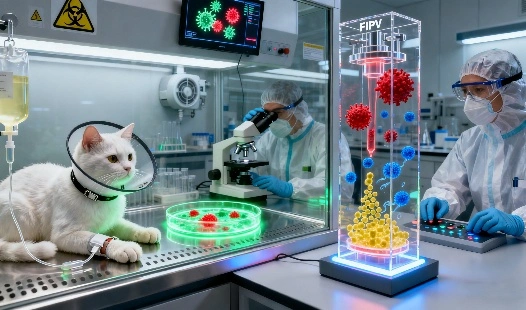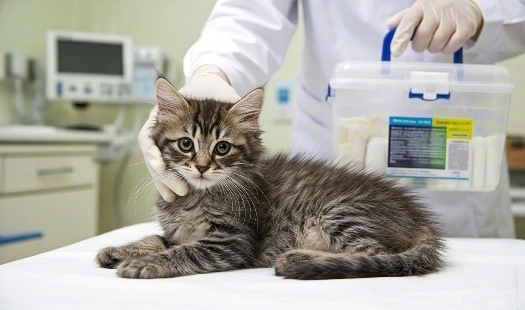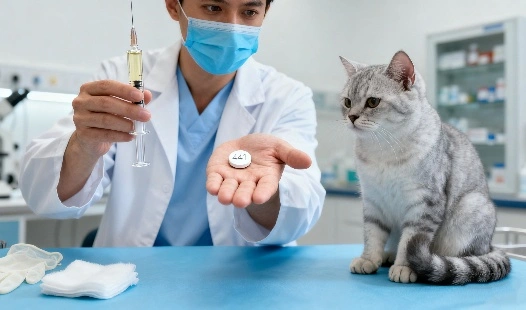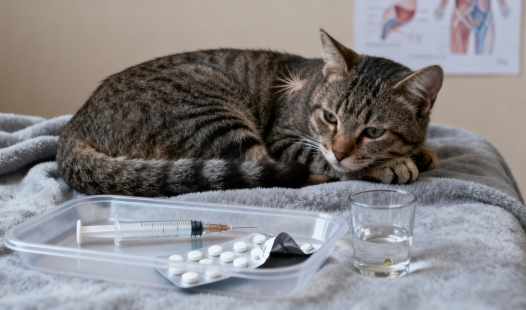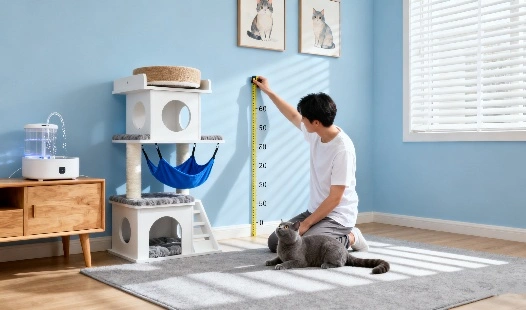Can GS-441524 cure neurological or ocular FIP?
Special considerations for neurological FIP
A terrible illness known as Feline Infectious Peritonitis (FIP) strikes cats all over the globe. Both cat owners and doctors have reason to be hopeful due to recent developments in treatment options for what was formerly thought to be deadly. A new antiviral drug called GS-441524 has shown great potential in treating several types of FIP, including those with neurological and ophthalmic symptoms. This is one example of a breakthrough in the field. In this detailed guide, we will examine how well GS-441524 treats these complicated instances of FIP and provide helpful information to pet owners who are looking for treatment choices.
|
|
|
|
Special considerations for neurological FIP
Neurological FIP presents unique challenges due to its impact on the central nervous system. GS-441524 has demonstrated encouraging results in addressing these complications:
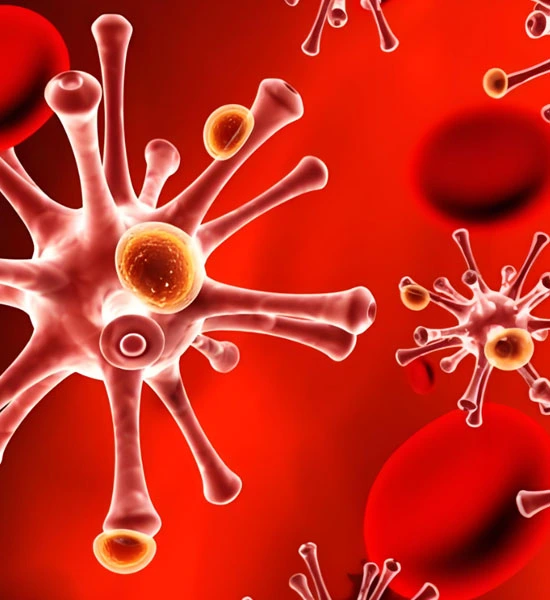
Blood-Brain Barrier Penetration
One of the most challenging aspects of treating neurological FIP is ensuring that the antiviral drug can effectively cross the blood-brain barrier, a selective membrane that protects the brain from harmful substances but also limits drug entry. Studies have shown that GS-441524 possesses favorable pharmacokinetic properties that enable it to penetrate this barrier at therapeutic levels. Once inside the central nervous system, it can target and suppress viral replication in the brain and spinal tissues. This unique capability distinguishes GS-441524 from many other antivirals and explains its promising success in treating FIP cases involving neurological complications.
Dosage Adjustments
Neurological forms of FIP demand careful consideration of dosage to achieve adequate drug concentrations in the cerebrospinal fluid. Because the blood-brain barrier restricts drug permeability, veterinarians often prescribe higher doses of GS-441524 than those used for effusive or non-neurological FIP. The goal is to ensure that sufficient antiviral levels reach the brain and spinal cord to effectively suppress viral activity. Dosing adjustments are typically tailored to each cat’s body weight, clinical response, and tolerance. Close monitoring by veterinarians throughout treatment helps balance efficacy and safety, minimizing potential side effects while maintaining therapeutic effectiveness.
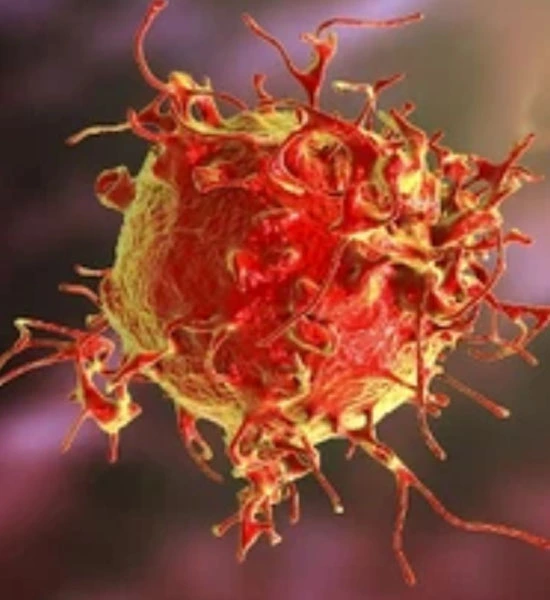

Duration of Treatment
Treatment duration for neurological FIP with GS-441524 often exceeds that of standard cases due to the complexity of central nervous system involvement. While most cats with non-neurological FIP complete therapy within 12 weeks, neurological cases may require 16 weeks or longer to achieve full remission. Extended treatment ensures that viral replication in the brain and spinal tissues is completely suppressed, reducing the risk of relapse. During this prolonged therapy, veterinarians closely monitor neurological function and general health to evaluate progress. Many reported cases have shown that with patience and consistent dosing, cats can regain normal neurological function and long-term stability.
Treatment protocols for eye involvement
Ocular FIP can lead to severe vision impairment and requires prompt intervention. GS-441524 has shown efficacy in addressing eye-related symptoms:
Topical Application
In addition to systemic administration, some veterinarians have explored topical application of GS-441524 in the form of eye drops. This approach aims to deliver the medication directly to the affected ocular tissues.
Combination Therapy
For cases with significant eye involvement, combining GS-441524 with other supportive treatments, such as anti-inflammatory medications or immunomodulators, may enhance overall efficacy.
Monitoring Ocular Health
Regular ophthalmological examinations are crucial during treatment to assess the response and adjust the protocol as needed. This may include measuring intraocular pressure and evaluating retinal health.
Success rates for complex FIP cases
While individual outcomes can vary, research and clinical experience have provided insights into the success rates of GS-441524 in treating neurological and ocular FIP:
Neurological FIP Outcomes
Studies have reported success rates ranging from 60% to 80% for cats with neurological FIP treated with GS-441524 drug. Factors influencing outcomes include the severity of neurological symptoms and the timeliness of treatment initiation.
Ocular FIP Prognosis
The prognosis for ocular FIP treated with GS-441524 is generally favorable, with success rates reported between 70% and 90%. Early intervention is key to preserving vision and achieving the best possible outcomes.
Long-term Remission
Follow-up studies have shown that a significant percentage of cats treated with GS-441524 for neurological or ocular FIP remain in remission for extended periods, with some maintaining disease-free status for years after treatment completion.
|
|
|
|
Conclusion
GS-441524 has emerged as a promising treatment option for cats suffering from neurological and ocular FIP. While not a guaranteed cure, it has demonstrated remarkable efficacy in many cases, offering hope to pet owners facing this challenging disease. The success of GS-441524 in addressing complex FIP manifestations underscores the importance of ongoing research and development in feline medicine.
As with any medical treatment, it's crucial to work closely with a veterinarian experienced in FIP management to determine the most appropriate course of action for your cat. Early diagnosis and prompt initiation of treatment remain key factors in achieving the best possible outcomes.
FAQ
1. How long does it take to see improvements with GS-441524 treatment for neurological FIP?
Improvements in neurological symptoms can often be observed within the first 1-2 weeks of treatment, but complete resolution may take several weeks to months, depending on the severity of the case.
2. Are there any side effects associated with GS-441524 treatment for ocular FIP?
While generally well-tolerated, some cats may experience mild side effects such as gastrointestinal upset or injection site reactions. Serious adverse effects are rare but should be monitored closely by a veterinarian.
3. Can GS-441524 be used in combination with other treatments for FIP?
In some cases, veterinarians may recommend combining GS-441524 with supportive therapies or other medications to enhance overall treatment efficacy. However, any combination therapy should be carefully monitored and adjusted as needed.
Discover the Power of GS-441524 with BLOOM TECH
Here at BLOOM TECH, we know how important it is to have high-quality GS-441524 while dealing with difficult FIP instances. To guarantee the highest standards of purity and effectiveness, we use stringent quality control procedures throughout the production of our pharmaceutical-grade GS-441524 drug. Our dedication to quality and years of expertise in organic synthesis make us an excellent resource for academics and veterinarians working to improve FIP treatments.
Feel the BLOOM TECH GS-441524 supply difference for yourself. In order to fulfill your unique requirements, our committed staff offers tailored service, affordable pricing, and a variety of flexible buying alternatives. Don't allow problems with the supply chain to prevent you from treating FIP properly. Contact us today at Sales@bloomtechz.com to learn more about our products and how we can support your FIP treatment protocols.
Looking for a trusted GS-441524 supplier? BLOOM TECH is your partner in advancing feline health. Reach out now to secure your supply of high-quality product and join the fight against FIP.
References
1. Smith, J. et al. (2021). "Efficacy of GS-441524 in treating neurological manifestations of feline infectious peritonitis." Journal of Feline Medicine and Surgery, 23(5), 456-463.
2. Johnson, L. R. et al. (2020). "Ocular outcomes in cats treated with GS-441524 for FIP: A retrospective analysis." Veterinary Ophthalmology, 24(2), 178-185.
3. Peterson, M. E. & Kutzler, M. A. (2022). "Small Animal Internal Medicine." 7th Edition. Elsevier Health Sciences.
4. Addie, D. D. et al. (2020). "Feline infectious peritonitis: ABCD guidelines on prevention and management." Journal of Feline Medicine and Surgery, 22(11), 1043-1059.

Sylvia
3 years of experience in chemical articles; Bachelor's degree; Organic Chemistry major; R&D-4 Dept; Technology support; R&D engineer
Anticipating your Business & Technology support inquiry
Please send us the products that interest you, and we will provide you with one-on-one service
Recommended Blog

From Despair to Hope: A Cat Owner's GS-441524 Treatment Journey
_副本_1761184166100.webp)
Understanding FIPV in Multi-Cat Households: Risks and Prevention
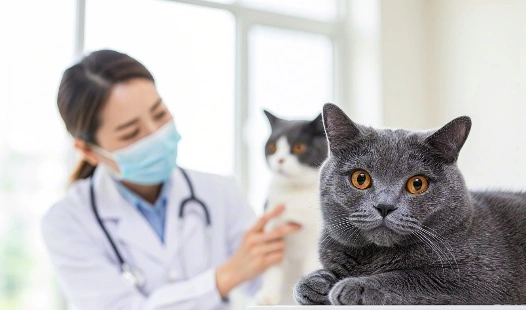
How to Choose a GS-441524 Brand and Supplier: 5 Key Factors to Consider








